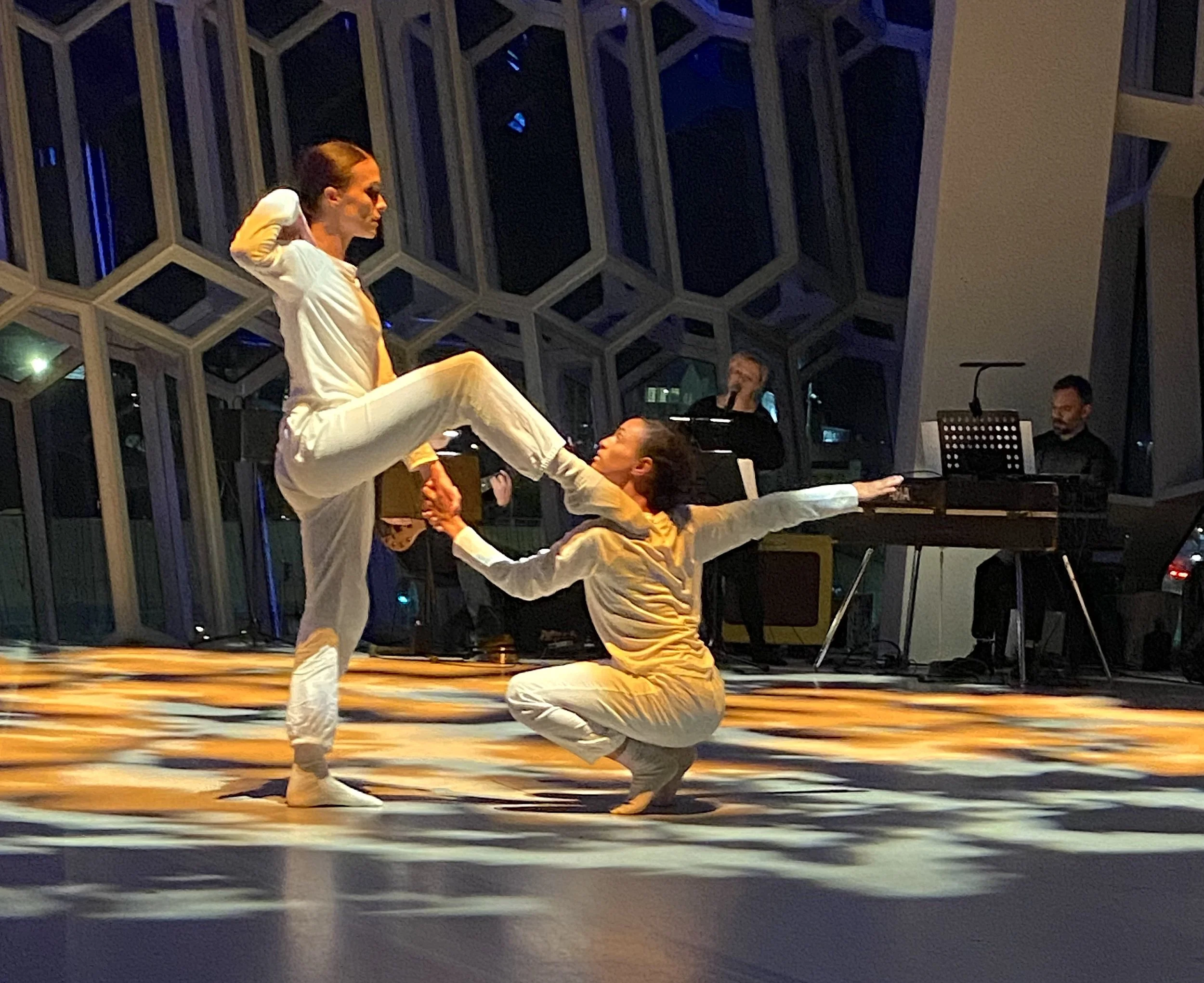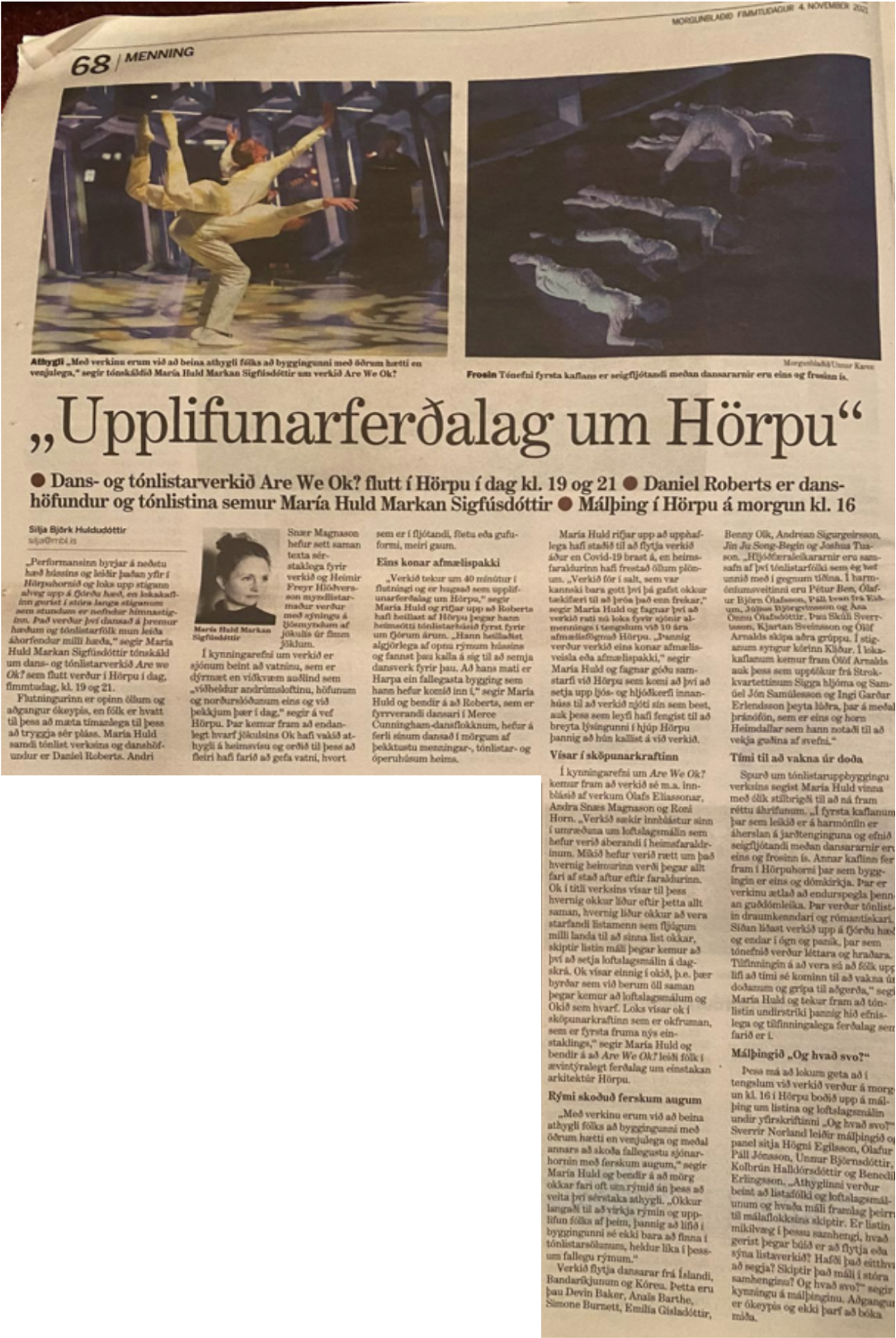About
Text by Andri Snær Magnason
Ok - etymology
The Icelandic word Ok, is the same as the english yoke [jəuk]
noun -
1. A frame placed across a person’s shoulders, for carrying water or
2. Something that weighs people down, a burden, like being under the yoke of an oppressive regime.
3. In Icelandic Ok also the Ok-cell in english, the zygote, from greek zygoun "to join" or "to yoke") In humans a zygote is formed when an egg cell is fertilised by a sperm cell. The zygote's genome contains all of the genetic information necessary to form a new individual organism.
4. Ok-jökull, the Ok-glacier is the first Icelandic glacier to be lost to climate change. The dead ice on the Ok-mountain contains all the elements of what will happen to all glaciers in the world in the next 100 years. The DNA of a great disaster, the glaciers were the yoke of the world, they carried the water that is now released to the seas.
5. OK is used in Iceland, taken from english: adj. 1. All correct, all right; satisfactory, good; well, in good health or order. Also in terms of acceptance, similar to yes.
The etymology seems to prove that the gods are sarcastic when it comes to human toil and problems. This water the glaciers used to hold, will become the yoke of future generations with rising oceans, an indicator that our current systems are not ok. The first glacier to be lost, Ok-glacier is a symbolic zygote for greater destruction, but possibly the birth of a paradigm shift - as we know what is happening and what needs to be done, we have all the DNA to solve the problem.
-
Ok - no hk1. byrði eða áþján sem lögð er á e-n
varpa af sér okinu
Samheiti: klafi no kk, farg no hk, baggi no kk, drápsklyfjar no kvk ft, þyngsli no hk ft, klyfjar no kvk ft, berustykki no hk, burður no kk, kvöð no kvk
2. tréstykki á dráttardýri (uxa), eða stöng til að bera tvær vatnsfötur.
3. Ok-fruma verður yfirleitt til við frjóvgun tveggja einlitninga, það er að segja eggfrumu frá kvenkyns einstaklingi og sæðisfrumu frá karlkyns einstaklingi sem sameinast til að gera tvílitning. Okfruma inniheldur DNA frá móður og föður hefur allar nauðsynlegar erfðaupplýsingar til að mynda nýjan einstakling.
4. Ok-jökull er fyrsti nafnkunni íslenski jökullinn sem hverfur vegna manngerðra loftslagsbreytinga. Eldarnir sem maðurinn hefur kveikt til að knýja samfélög sín á síðustu 100 árum hefur valdið því að magn CO2 í andrúmsloftinu hefur aukist meira og hraðar en dæmi eru um í jarðsögunni. Hvarf ok-jökull gefur okkur allar nauðsynlegar upplýsingar til að skilja framtíð jökla á Íslandi og víðar um heim.
5. Ok - tökuorð úr ensku, slangur - all í lagi, allt er í röð og reglu. Samþykki.
Samkvæmt fornum alþýðlegum íslenskum hugsunargangi um speglun tungumáls og veraldar þá benda hinar mismunandi merkingar í ok til ákveðins mynsturs sem ber í sér merkingu og spásögn. Dauðísinn á Ok-fjalli er einnig ok-fruma sem ber í sér DNA alvarlegra breytinga. Vatnið sem jöklarnir geymdu streymir til hafs og verður að oki, jafnvel drápsklyfjum komandi kynslóða. Hið enska OK, virðist sýna kaldhæðni örlaganna. Það er undir okkur komið að sanna að ok-fruman er fyrsta vísbending um jákvæð umskipti og lærdóm - baráttan um að allt verði að lokum - ok.
Background
Daniel Roberts first met María Huld Markan Sigfúsdóttir during the production of avant-garde choreographer Merce Cunningham’s Split Sides. Roberts was dancing in the Merce Cunningham Dance Company and Sigfusdottir was performing with her band Amiina alongside Sigur Rós, who composed the musical accompaniment for Split Sides in collaboration with the UK band Radiohead. Roberts came to know Sigfúsdóttir’s work through his connection with Sigur Rós band member Kjartan Sveinsson, when Roberts and Sigfúsdóttir began discussions about their shared interests in weather/climate and creating a dance-music collaboration.
Upon a visit to Reykjavik, Roberts was inspired by Olafur Eliasson’s magnificent designs for the spaces within Harpa, particularly the atrium—the dark stone that resembles Iceland’s igneous rocks, the “landscaped” balconies and stairways, the play of hexagonal shapes and Northern lighting, the dramatic interstitial spaces between rooms, the vistas to the sea and city— and thought that Harpa symbolized the melding of art and nature. Their performance Are we Ok? is both a celebration and a reflection: it extols Eliasson’s designs for Harpa and is an artistic response to perilous global climate changes.
Press Release
On November 4, choreographer Daniel Roberts and composer María Huld Markan Sigfúsdóttir invited audiences on a journey through Harpa's unique architecture in a brand new piece featuring an international group of dancers, musicians and lighting designers. The piece, Are we Ok?, is inspired by the final disappearance of the glacier Ok and how global warming has and will affect life on earth and our whole existence in the future, as well as the creations of Andri Snær Magnason, Ólafur Elíasson and Roni Horn.
Are we Ok? has been in the works for years, but when choreographer Daniel Roberts (former dancer in the Merce Cunningham dance group) visited Harpa for the first time about 4 years ago, he was completely fascinated by the open spaces of the house and felt they were calling for him to compose a dance piece for them. He called on composer María Huld Markan Sigfúsdóttir to develop the idea further and the ideal opportunity arose during the organisation of Harpa's 10th anniversary celebration.
The dance and musical work is a visual and musical journey through movement, sound and light where the audience is led through Harpa's open space from the ground floor all the way up to the rafters. The work seeks to stretch perceptions of what Harpa can hold by offering a completely unique and site-specific performance composed by living, breathing artists who are grappling with current topics. Andri Snær Magnason has also put together a text especially for the piece and artist Heimir Hlöðversson will have an exhibition of photographs of glacial ice from 5 different glaciers.
Are we Ok? will be performed by 8 dancers from Iceland, France, the USA and Korea, as well as over 20 international musicians. The piece takes 40 minutes in its entirety and will be performed twice on November 4, first at 19:00 and then again at 21:00. The performance is open to everyone, but we encourage those who are interested to arrive on time to secure a place.




